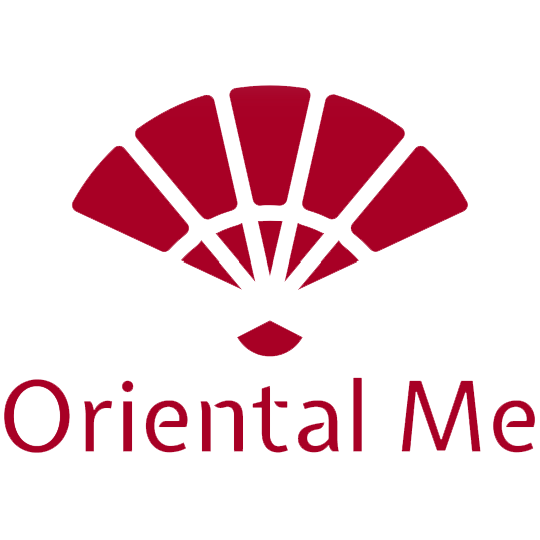- What is Qun Kwa?
- Types of Qun Kwa
- What to wear under Qun Kwa?
- Symbolism of Patterns on the Dragon and Phoenix Qun Kwa
What is Qun Kwa?
The Qun Kwa (裙褂), also known as Qun Gua or Qun Kua, is a traditional Chinese wedding dress deeply embedded in Chinese culture, particularly among Cantonese communities. This attire is richly symbolic, featuring intricate embroidery in gold and silver threads, with common motifs like dragons, phoenixes, and peonies representing good fortune. The term "Qun" (裙) refers to the skirt, while "Kwa" (褂) means jacket, highlighting the two-piece design of this outfit. Traditionally, the Qun Kwa is worn by the bride during the tea ceremony and other wedding rituals and is sometimes also showcased at the wedding banquet, allowing the bride to celebrate her cultural heritage.
Types of Qun Kwa: Dragon Phoenix Kwa vs XiuHeFu
1. Traditional Dragon Phoenix Kwa
- History: The Dragon Phoenix Kwa tradition began when an emperor gifted a dragon and phoenix kwa, intricately embroidered with silk, to the daughter of Qing Dynasty Prime Minister Liang Chu for her wedding. This imperial blessing brought honor and set the trend for wearing kwa at weddings.
- Pattern: The kwa must include both dragon and phoenix motifs, with the color scheme fixed to red fabric and gold or silver embroidery. The design emphasizes the dragon's prominence, with the phoenix positioned to lead toward it.
- Embroidery: Using the Bok Sam technique from Cantonese embroidery, which creates a 3D effect, these kwa are categorized by embroidery density:

- King Kwa (褂皇): 98%-100% covered with embroidery. Almost entirely devoid of red.
- Queen Kwa (褂后): 90% covered with embroidery
- Large Five Blessings (Da Wu Fu 大五福): 80% covered with embroidery
- Medium Five Blessings (Zhong Wu Fu 中五福): 70% covered with embroidery
- Small Five Blessings (Xiao Wu Fu 小五福): Less than 50% covered with embroidery
- Shape
- The upper jacket: typically, in a straight-tube shape. However, with the evolution of contemporary aesthetics, the upper jacket is often tailored with some waist shaping to highlight the beauty of the female figure.
- The lower skirt: traditionally has a straight shape, while new designs incorporate modern adaptations with a flared style.
2. XiuHeFu
- History: The Xiuhefu is a modern adaptation of the Qing dynasty aoqun wedding attire, follows the traditional Chinese yingyang clothing system
- Pattern: Xiuhe dresses display diverse patterns beyond dragons and phoenixes, including flowers and animals with auspicious meanings. For example, peonies represent prosperity, birds (e.g. peacocks) to symbolize love for whole seasons ,bats symbolize "good fortune," and lilies signify harmony for the couple.
- Shape: Xiuhefu is also a two-piece set. These dresses blend traditional Kwa elements with modern A-line skirt designs. The skirt has a looser style, commonly known as mamianqun , either be an A-line, pleated skirt or a pleated circle skirt
What to wear under qun kwa?

According to traditional customs brides usually wear a red undergarment beneath. This serves two purposes: first, to protect the skin from any irritation caused by the coarse fabric of the Qun Kwa, and second, to symbolize festivity and good fortune.
Symbolism of Patterns on the Dragon and Phoenix Qun Kwa
- Dragon: Symbolizes auspicious blessings across the land; paired with the phoenix, it represents harmony and prosperity.
- Phoenix: When paired with the dragon, it signifies a joyful union and embodies all good fortune and happiness.
- Goldfish: Symbolizes abundance year after year, with lasting blessings.
- Mandarin Ducks: Represents love and harmony between husband and wife, wishing for a happy, lifelong marriage.
- Five Bats: A homophone for "five blessings," symbolizing the arrival of five blessings (longevity, wealth, health, virtue, and peaceful death).
- Auspicious Clouds: Represents wealth, blessings, and smooth advancement in life.
- Peony Flower: Symbolizes grace, luxury, and beauty, as well as being a national treasure.
- Pomegranate Flower: With its abundant seeds, it symbolizes fertility and the wish for many descendants.
Significance of the Qun Kwa
- Unity and Harmony: The pairing of the dragon and phoenix symbolizes a harmonious marriage, combining the strengths and virtues of both partners.
- Prosperity and Happiness: These symbols are believed to bring good luck, prosperity, and happiness to the newlyweds.
- Cultural Heritage: Wearing a Qun Kwa honors Chinese heritage and respects customs passed down through generations
Modern Adaptations
While some brides choose the traditional Qun Kwa, modern weddings may incorporate variations that blend contemporary fashion with traditional elements. Designers might experiment with colors, styles, and fabrics while retaining the symbolic dragon and phoenix embroidery.
In summary, the Qun Kwa is more than a wedding dress; it is a cultural artifact that embodies the hopes, traditions, and values of Chinese weddings. The dragons and phoenixes serve as powerful symbols, representing prosperity, harmony, and eternal love for the couple’s future together.






